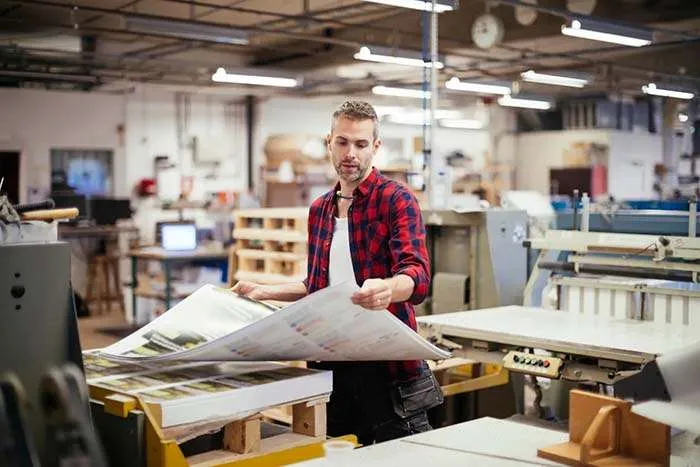
What Are the Different Types of Paper and Their Effect on Printing?
February 10, 2022
Have you ever thought about how ink and paper work together? Each type of paper used for printing has different characteristics. Every brand and variety has different weights, levels of brightness, and each sheet may be coated or uncoated. A professional print shop like Bestype Printing can guide you through the choices of the types of paper for printing, ensuring successful outcomes for your professional project.
Different Types of Printing Paper
The color of your paper, your black and color ink drying times, and the saturation of the ink on your paper are only some of the factors you need to consider in selecting the best sheet type for your project. This article will guide you through choosing the different types of paper to print on, whether you’re working with a professional print shop or printing items using your office printer. The types of printer paper you select impact your project’s success.
Types of Paper Used In Printing
While most people are familiar with the types of printer paper stacked by their office machine, professional printers stock a wider variety of media. Paper types most commonly found at your local printer include:
Matte. Matte paper is treated with a dull coating that doesn’t refract light. These sheets are the most common type of paper used in printing standard documents at home or in your office. Matte paper has a smooth finish that helps it absorb ink and helps the ink set and dry quickly, avoiding smears and smudges.
Glossy. These sheets are coated with different polymers, helping pages perform best with art and photographs. Because the ink dries slowly on glossy paper, printing technicians need to dry pages completely before assembling magazines or boxes of glossy printed items. Pages assembled too quickly may experience type smearing before the ink fully dries.
Bright White. Different levels of warmth, coolness, and brightness depend on the amounts of red, blue, and green refraction that the human eye notices when looking at a sheet of white paper. Paper producers can control the whiteness and brightness of their products by adding OBAs (optical brightening agents) to their chemical mix.
Photo. In this type of paper, typically, only one side of each sheet receives a glossy polymer coat that interacts well with photographs and full-color art. Photo paper has a much higher weight and is chemically treated so that it’s brighter, helping create definition and contrast for the images printed on its glossy side.
Characteristics of the Different Types of Paper to Print On
Every manufacturer formulates their paper a little differently. The mix of pulp (wood and other fibers), chemicals, and unique production processes combine to create the different styles and types of paper to print on. Paper types perform differently depending on their application. Paper characteristics that affect print success include:
Texture. While most professional print projects involve either matte or gloss paper coated with a thin polymer, an uncoated raw paper may be appropriate for your project.
Opacity. The property of light passing through paper is translucence. Opacity measures how translucent a paper is. The processes applied to formulate higher opacity paper make these sheets better for double-sided printing of dense text, photographs, and illustrations.
Brightness. Paper manufacturers have developed a brightness scale for paper, which measures how each type of paper refracts light. Paper brightness ranges from 0 to 100, with 80 and above being the standard for the highest quality paper. The brightest papers, ranging from 96 to 100, help printed images stand out against their backgrounds.
Weight. Paper mills measure how heavy or thick a paper is in grams. Thicker, heavier paper is less translucent and more suitable for printing double-sided text and images. Thinner paper is less opaque, and the bleed-through of text and images is very noticeable. Heavier and thicker paper tend to be more expensive than thinner, standard paper.
Choosing the Perfect Paper for Printing Any Project
Bestype’s over 40 years of expertise in printing anything, and everything, for New Yorkers makes us paper experts. Our team is always ready to help you select the perfect materials for any project within any budget. Our conveniently located shop has many different types of printer paper in stock for you to use in your projects. Visiting our shop for your complimentary consultation will allow you to feel and experience the many paper items we carry. We love helping you design your projects, and our knowledge of paper will help your text, images, and designs get noticed. Contact us today about how we can help you print your next project quickly and accurately.
Tags: Different types of paper to print on, Different types of printing paper, Ink and paper, Ink drying times, Levels of brightness, Printing double-sided text and images, Saturation of the ink, Types of paper for printing, Types of paper used in printing, types of printer paper